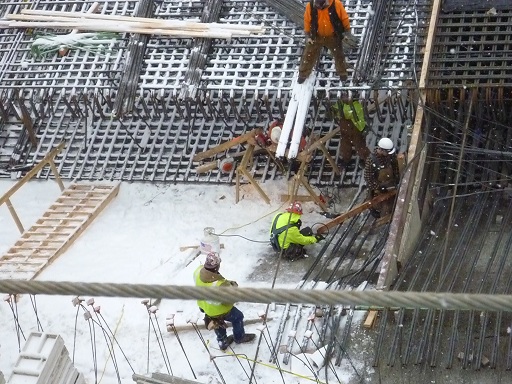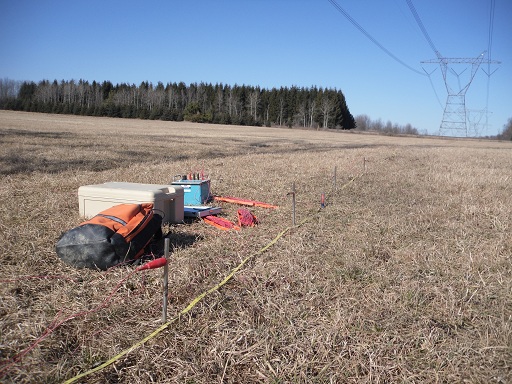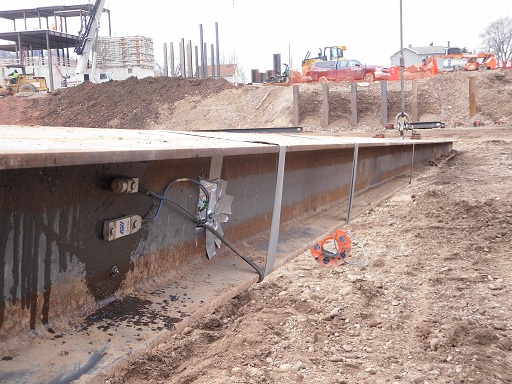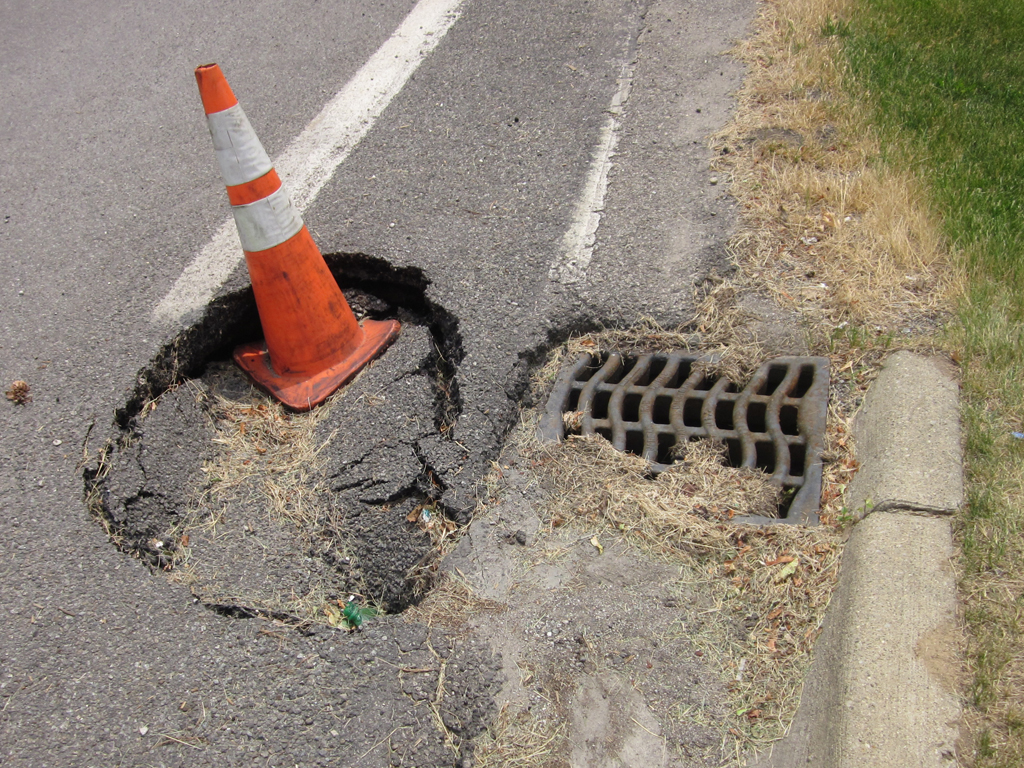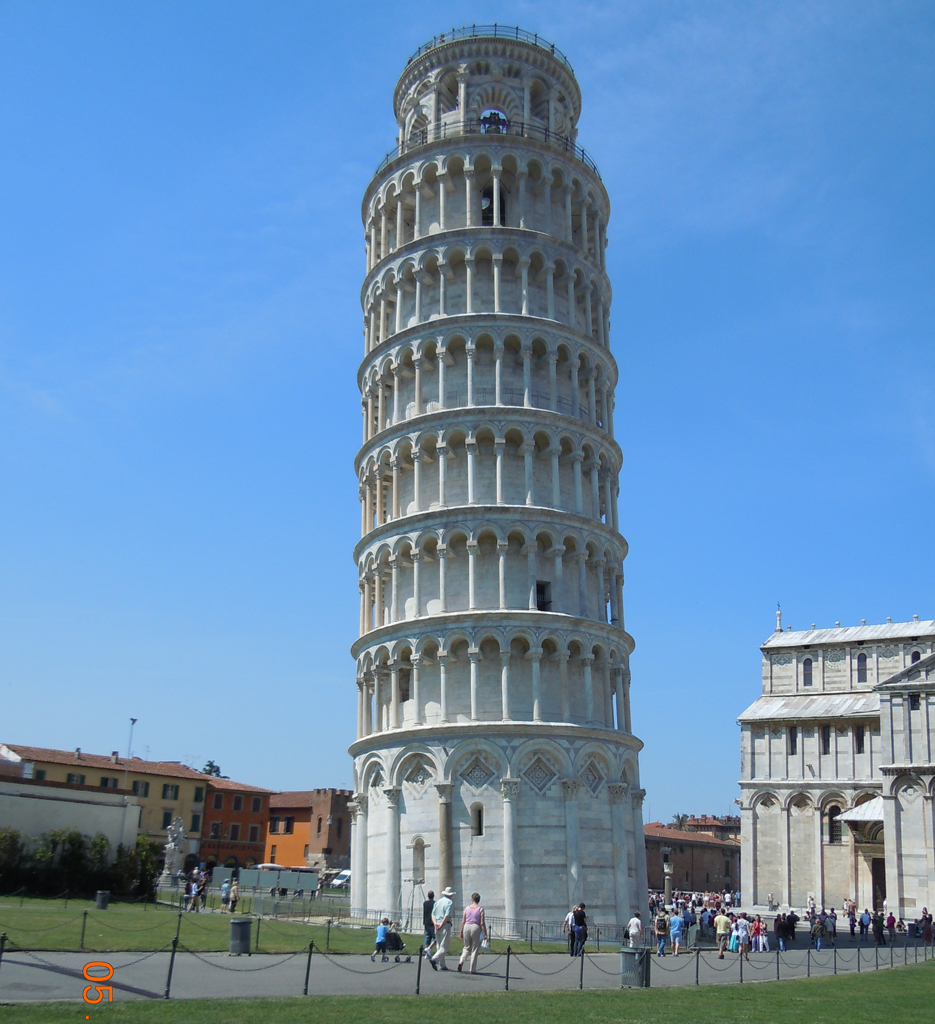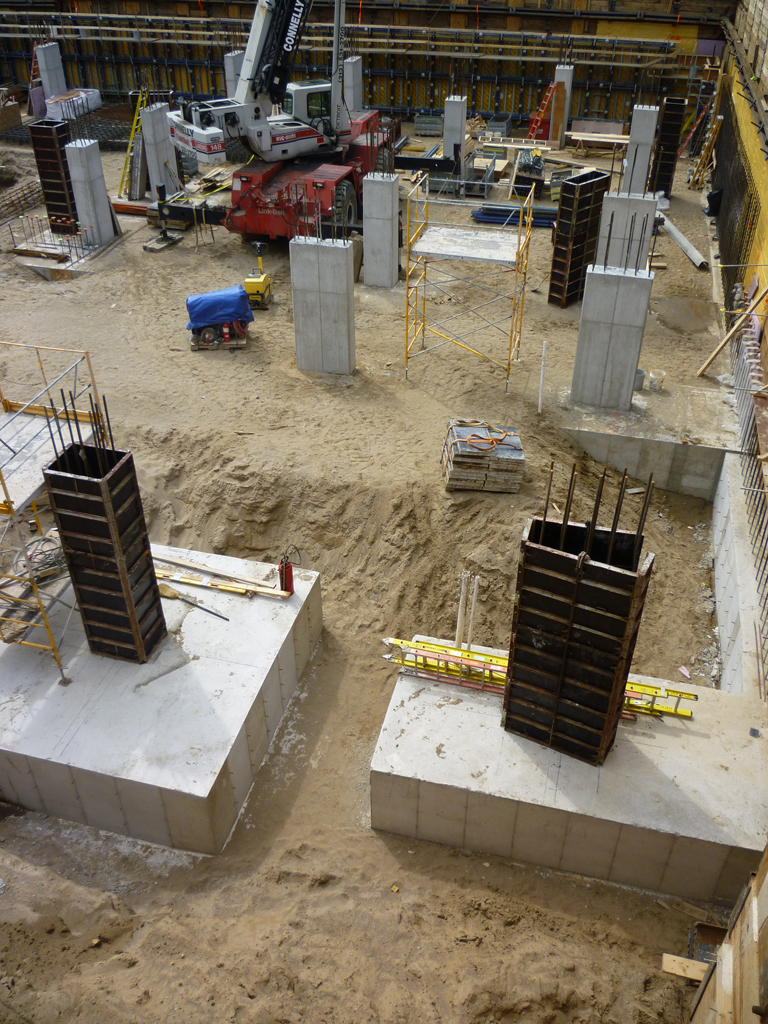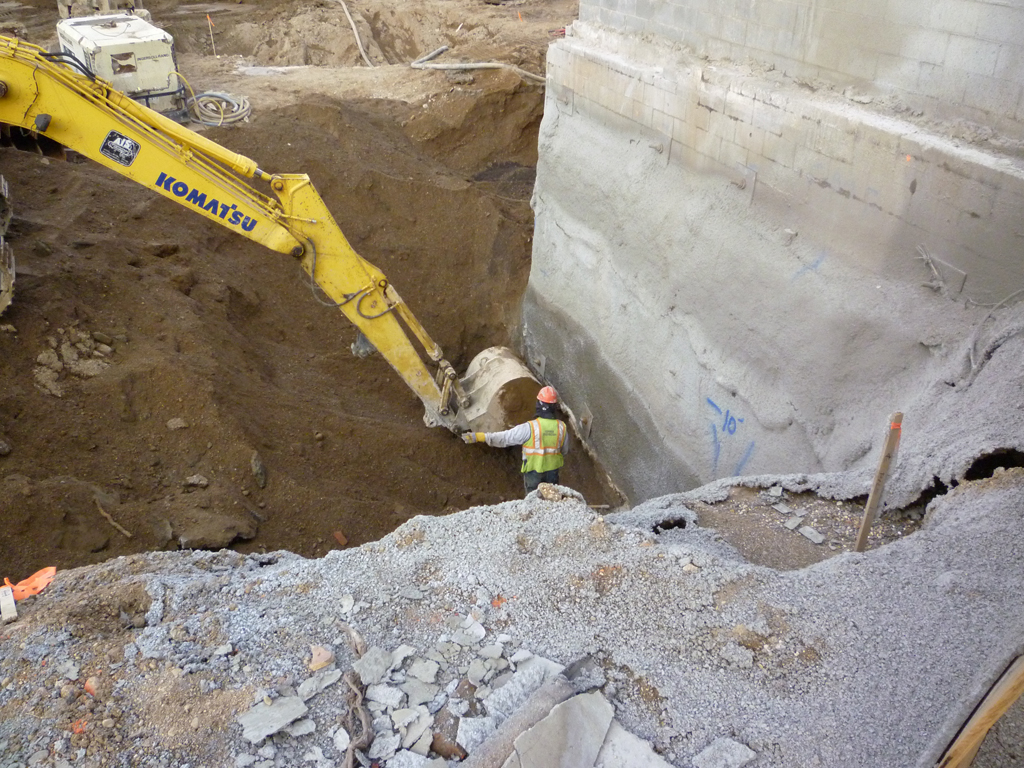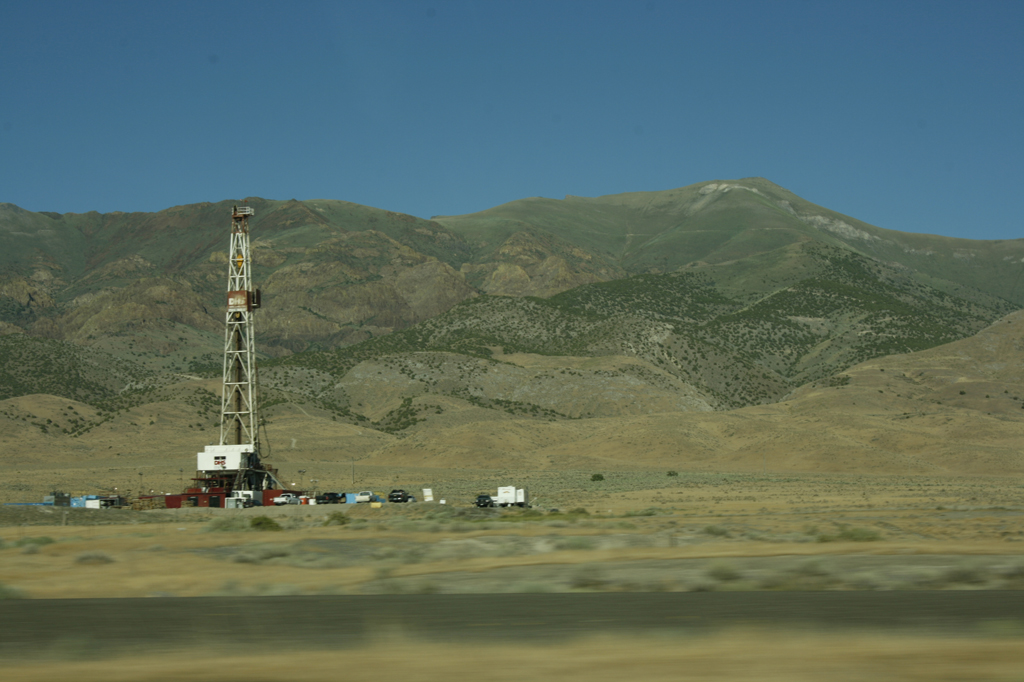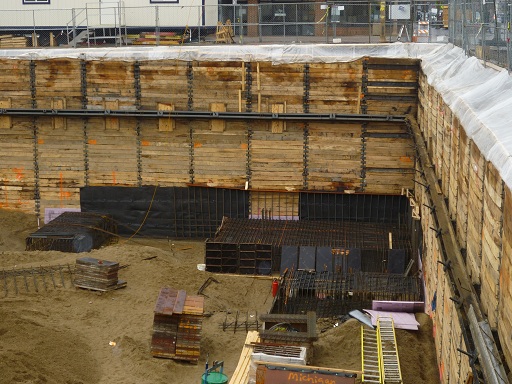
Photo Credit: Alex Mead
Seen here are three rebar cages for the spread footings of a large building. Spread footing foundations are preferred to deep foundations. This is due to the increased work, and therefore increased cost, of a deep foundation. Deep foundations could use H-piles, micro-piles, or other options to support the building. For the design of a foundation, the bearing capacity of the soil or rock and the column loads of the proposed building must be understood. If the size of the footing can be made feasibly, given the loads and bearing capacity of the project, spread footings will be used.
